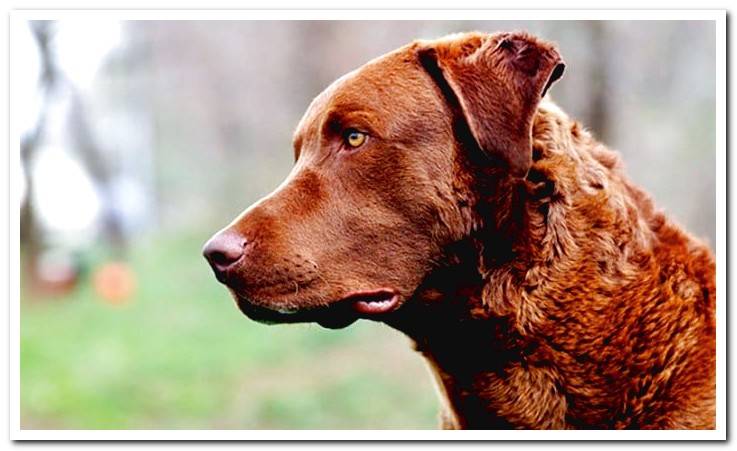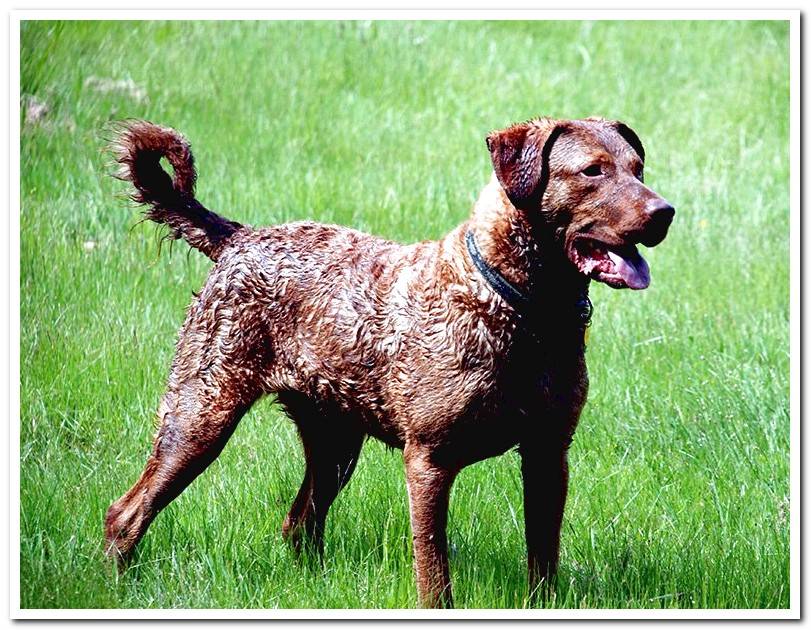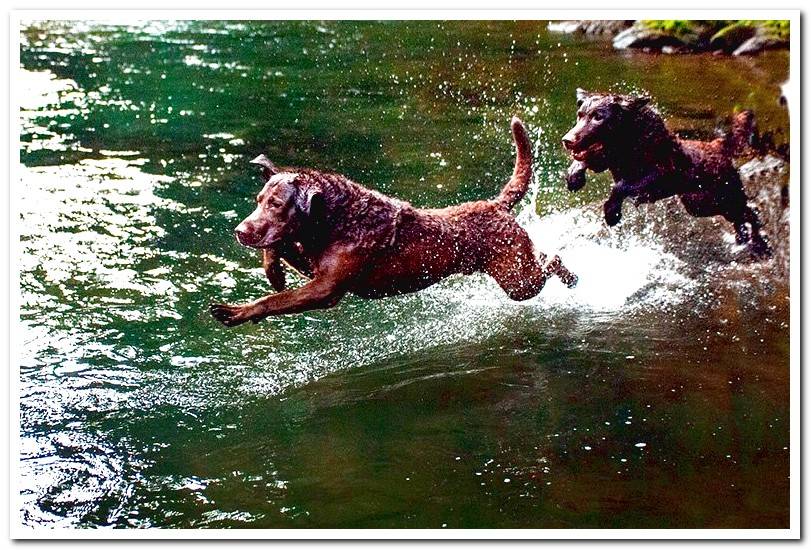
This intrepid companion dares with everything. Accustomed to living in extreme weather conditions, he has developed a tough character, making him a dog not suitable for all audiences. If it is your first pet or you are not given to exercise daily this breed is not for you.
The Chesapeake bay retriever is a medium-sized dog, robustly built and extremely agile and versatile. It treasures some magnificent qualities for land and water hunting, as well as for the practice of canine sports such as agility or the Schutzhund. Do you want to know more about this breed? Let’s go there.
Index of contents
- 1 Chesapeake Retriever Features
- 2 How is the character of a Chesapeake retriever?
- 3 Recommended care for the Chesapeake retriever breed
- 4 Common health problems in retriever bay Chesapeake dogs
- 5 Race history and fun facts
Chesapeake Retriever Features
These specimens can be said to be longer than they are tall. They have medium eyes, well separated and amber, very expressive. The ears are low, high set and hang on either side of the head. Their tail is of a medium thickness and they usually carry it straight or slightly curved. Its coat is short and wavy on the shoulders, neck, back and back.
|
|
Height between 58 and 66 cm in males and between 53 and 61cm in females |
|
|
Weight between 29 and 36 kg in males and between 25 and 32 kg in females |
|
|
Double-layered brown or brown hair |
|
|
Curious, intelligent and vital character. |
|
|
Strong health |
|
|
Estimated life expectancy between 10 and 14 years |

How is the character of a Chesapeake retriever?
The Chesapeake By Retriever is a dog full of excellent qualities, he is brave, intelligent, active, faithful to his owner, strong and respectful. By cons, it can be somewhat aggressive towards other dogs if it is not well educated, it is somewhat jealous and not very patient.
Due to its territorial character may not tolerate other pets, his early socialization being the only way to calm his dominant temperament. For the same reason, it is not suitable for living in confined spaces or with people who prefer sedentary living.
Supports low temperatures. Therefore, he willingly agrees to live in the garden. However, this does not mean that he does not claim the company of his human family. It is not an easy breed to control, therefore, if it is your first dog, you must be firm and patient to approach its training. The clicker method It is the one with the best results.
Recommended care for the Chesapeake retriever breed
In addition to intense physical exercise, these dogs appreciate swimming regularly.. Water is a medium in which they feel especially comfortable. Without daily physical activity, they can become destructive and disobedient pets.
Their coat requires regular brushing and not being bathed too often to avoid removing oily substances that protect them from cold and moisture. Their eyes, ears and mouth should be sanitized, at a minimum, weekly.
Company and affection are part of their care, as well as a balanced and nutritious diet that provides them with the nutrients, vitamins and minerals they need to keep their organs and muscles in perfect condition. Vaccines and deworming, as well as regular visits to the vet complete the care section.

Common health problems in retriever bay Chesapeake dogs
Although we have previously stated that these dogs generally enjoy very good health, it is no less true that this breed shows a certain predisposition to develop the following diseases:
- Progressive retinal atrophy.
- Waterfalls.
- Hip dyspasia, mainly as a consequence of its size, its corpulence and its energetic lifestyle.
- Von Willebrand disease, a bleeding disorder caused by a lack of the protein “von Willebrand factor” that causes difficulties in it. Dogs with this condition may bleed to death due to the difficulty of stopping bleeding.
- Alopecia, especially, if we do not bathe it with specific shampoos for dogs and we do not remove all the soap completely.
Race history and fun facts
Its origin dates back to 1807. An English brig was wrecked in the Chesapeake Bay in the US state of Maryland. A local ship named “Canton” rescued the crew. In it were 2 Newfoundland breed dogs that were crossed with local retrievers to perfect their qualities as collectors.
In the following generations Other breeds such as the English Otterhound, the Curly coated retriever and the Flat coated retriever were used giving rise in 1884 to the Chesapeake Retriever’s own standard. Although they were initially used as hunting dogs and as guardians, today they are regulars of field trials or agility.
As a curiosity it should be added that the so-called “hare’s feet” with well-differe
ntiated interdigital membranes and with rounded toes and together are characteristic of this breed. If there are spurs, they must be surgically removed as soon as possible to prevent injuries during their frenetic daily activity.
